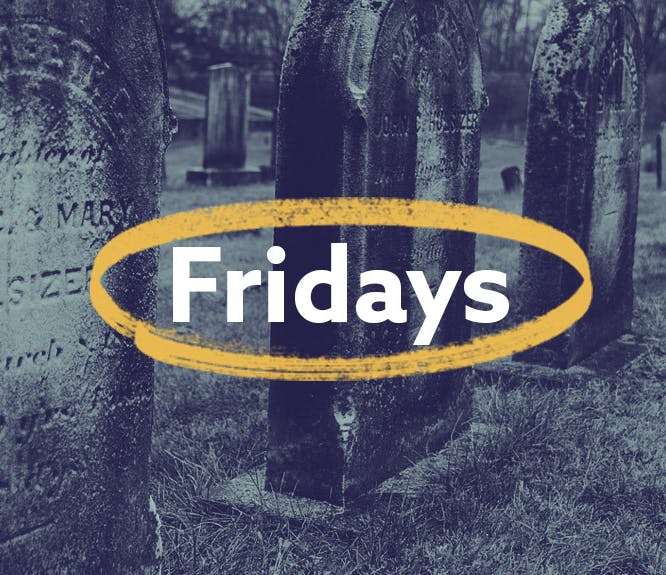How to Use the Billion Graves Index
1-2 minute read
By The Findmypast Team | September 21, 2016
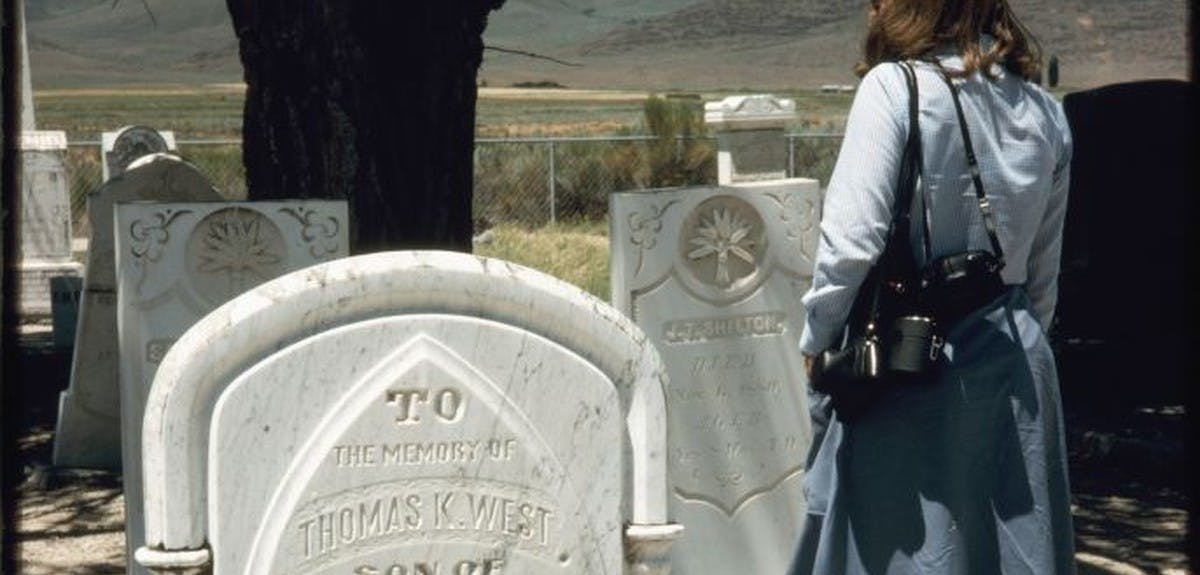
Headstones are a great resource for genealogists because not only do they provide important vital information about your ancestors, such as birth and death dates, they may also provide additional details about your ancestor's life. Gravestone inscriptions can show family relationships, societies or organizations your ancestors may have been part of, military rank or affiliation, religious denomination, location where your ancestor died, and more. A headstone may be just the thing to reveal those missing details to help you overcome those tough brick walls and provide you clues on where to go next in your genealogical search.
The Billion Graves index is a great resource if you're looking for information about your ancestor's death. The Billion Graves index includes over 12 million headstone records for the United States alone, and each entry includes a transcript of what's included in the record, a photograph of the gravestone, and GPS details of the location of the gravestone, so you don't have to leave the comfort of your home to see your ancestor's grave, which can save you a lot of time and money in your search.
You can access the Billion Graves index by searching our A-Z of record sets and typing in "Billion Graves" into the search box, which will pull up all of our Billion Graves indexes for the United States, Canada, Australia, England, Ireland, New Zealand, Scotland, and Wales.
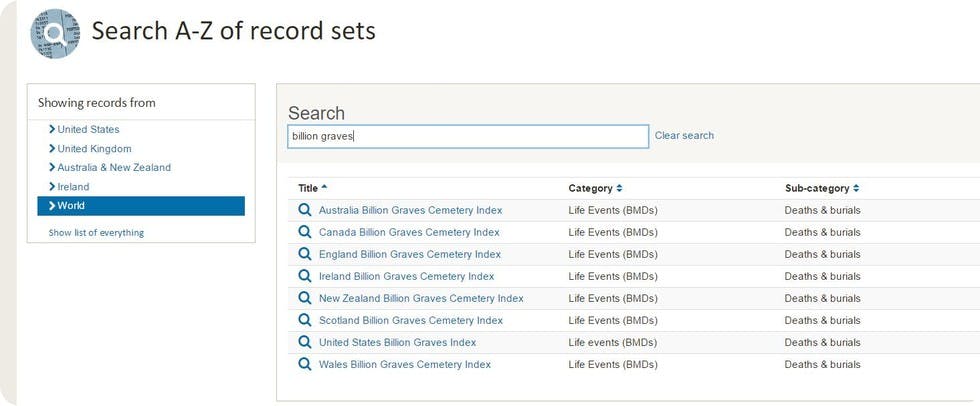
Next, select which country you're looking for your ancestor in and then you'll be taken to a search page for that specific record set.
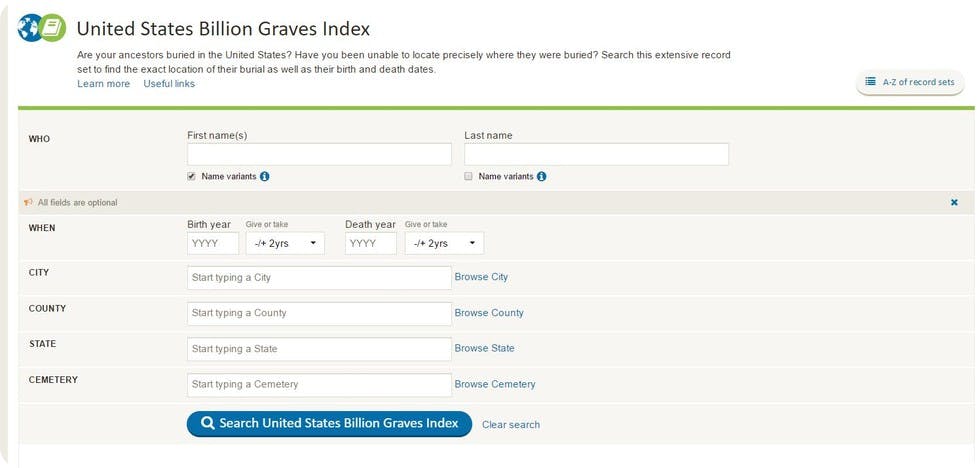
The information provided with vary dependent upon what the gravestone has on it and the records the cemetery has, but generally you can find these items in this record set:
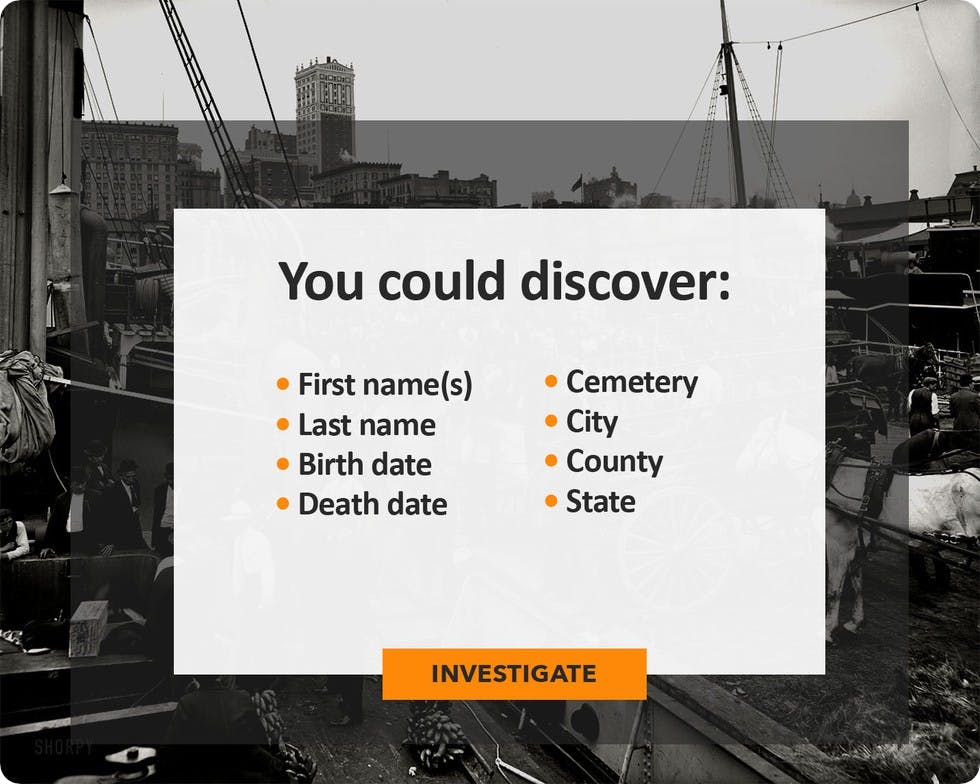
Search the Billion Graves Record
Keep in mind that this index is a great way to gain more information about your ancestors and where they are buried, but it won't necessarily provide you information surrounding their death, so if they died in another location and were transported to the cemetery, this record set most likely won't include that information unless it's on the gravestone itself. Be sure to look at the image of the gravestone to help determine any additional information about your ancestor. Within the transcription there will be a link to the image and more information on the Billion Graves site.
Gravestones alone aren't primary sources for genealogical research, but they are a great way to overcome brick walls and to provide clues for obtaining the primary source documents.
Related articles recommended for you
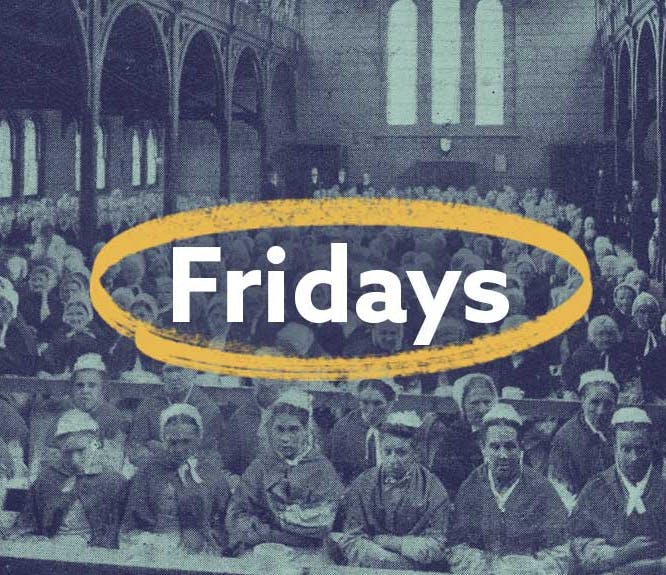
Discover workhouse records, school logs and so much more
What's New?

Remember the lives of your ancestors with Norfolk memorials and so much more
What's New?

Cultivate new connections in the South East of England with new parish records
What's New?
